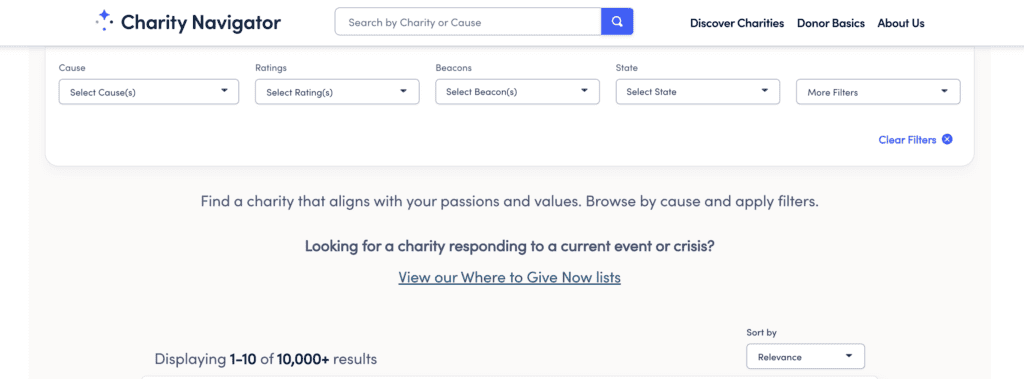
Perfect Pairings: The Importance of Finding the Right Nonprofit-Corporate Partnerships
Peanut butter and jelly. Taylor and Travis. Sun and sand. Coca-Cola and the Olympics. Lowes and Building Homes for Heroes. Some things just go better together. For nonprofits and corporations yet to form a strategic alliance, a considerable opportunity awaits. There are many obvious (and less obvious) benefits, including brand perception, social impact, improved employee retention, and heightened community engagement. Forming the right partnership can provide incredibly important benefits to both the nonprofit and the corporate sponsor.
In this edition of Plain Talk, we’ll delve into nonprofit-corporate partnerships. Find out why nonprofits and corporations should partner, why these relationships are mutually beneficial, and learn what criteria each should consider in their selection.
- What Is a Nonprofit-Corporate Partnership?
- What’s in It for the Nonprofit Partner?
- What’s in It for the Corporate Partner?
- Evaluating Potential Partners
- Aligning Partnerships With Customers
- Get Expert Help Navigating Corporate-Nonprofit Partnerships
What Is a Nonprofit-Corporate Partnership?
A nonprofit-corporate partnership is exactly what it sounds like—a nonprofit organization and a for-profit corporation coming together to mutually benefit one another. In these partnerships, nonprofits and corporations join forces to work toward a common goal, utilizing each other’s resources, expertise, networks, and goodwill. While their reasons for collaboration may differ, the nonprofit and corporation should have similar values and shared goals to ensure an effective partnership that aligns with both entities’ overarching missions and principles. These partnerships can take various forms, including but not limited to philanthropic donations or grants, employee engagement, corporate sponsorships, or cause-marketing campaigns.
1. Philanthropic donations
Companies looking to enhance their community standing may choose to donate once or create a relationship with a nonprofit to donate funds under certain criteria, depending on their philanthropic goals and specific social impact areas they wish to support. A popular way for corporations to team up with local nonprofits is through community grants. These typically occur around a specific event; for example, when an area is hit with devastating flooding, a company may create a disaster relief grant to assist nonprofits working with victims of the floods. The biggest difference with this type of campaign is that nonprofits must seek out this type of grant on their own rather than a corporation offering it up to them.
2. Employee engagement
Seventy-one percent of American employees say it’s important to them to work at a company that contributes to nonprofits. So, if a corporation is smart, they’ll make their work in the community obvious to their employees. One of the simplest and most popular ways to do this is with a matching gift program. These programs are often addressed as seasonal or annual giving campaigns. Corporations should make sure their employees know of a program like this though, since 78% of donors are unaware if their company offers this type of giving—yikes!
Businesses may also allow employees to take the work into their own hands, boosting employee engagement with internal employee fundraising. In-kind donation drives allow employees to give actual items rather than monetary donations. Company-wide volunteer days or paid volunteer time off allows employees to donate their time and effort to nonprofits without taking a vacation day off work. Nearly 60% of companies offer paid time off for employees to volunteer, with an additional 21% planning to offer this time off within the coming years.
3. Corporate sponsorships
Many times, nonprofits seek out corporate partners to sponsor a specific activity, event, or project. These sponsorships could be at different levels, for example, ‘gold,’ ‘platinum,’ or ‘silver’ sponsors. This provides corporations with a range of financial alternatives, allowing them to engage at a level aligned with their corporate giving limits.
4. Cause marketing campaigns
Here’s the deal: Consumers are much more conscious of the brands they buy from than they have ever been. Buyers and employees alike care about for-profit businesses’ sustainability efforts, with 90% of companies reporting that partnering with reputable nonprofits enhances their brands. Partnering with a nonprofit for a public-facing campaign is bound to boost business for the corporation, raise funds for the nonprofit, create new audiences for both partners, and build trust throughout the community. Cause marketing campaigns are typically integrated into a company’s marketing strategy and can take various forms, such as product packaging, advertising, or social media promotion.
What’s in It for the Nonprofit Partner?
When chosen properly, like Publix’s choice of Feeding America, the benefit of a corporate partner can be astronomical for a nonprofit. And in this economy, nonprofits could use all the help they can get. Forbes recently released this article that reminds us of the elephant in the room – “when inflation begins to rise, for-profit companies have an easier time mitigating the adverse effects.” Retailers can price hike to supplement the higher cost of doing business, but nonprofits can be suffocated by donors pulling tighter on their purse strings, not to mention prices of raising awareness through events like 5K races or galas are increased too. Having a corporate sponsor to bank on for financial support allows nonprofits to focus on their mission.
More awareness and engagement
Beyond financial support, having the backing of a corporate sponsor can help you double the donation with employee engagement. There is a mental and emotional benefit of volunteering, with 75% of U.S. adults reporting they feel physically healthier by volunteering. If your nonprofit partners with a corporation with volunteer programs that include paid time off, you’re likely to see some of your business partners becoming some of your greatest volunteers.
Successful corporate partnerships will also garner new audiences for nonprofits, as viewership of the nonprofit will circulate beyond the realm of the typical consumer. Take a local food bank, for example. Those who are not experiencing food insecurity may not even know they exist. But partner them with a local grocery store by placing donation boxes with their logo on them near the registers and watch the donations, awareness, and perhaps even volunteerism rise.
What’s in It for the Corporate Partner?
The truth is that a nonprofit-corporate partnership is a two-way street. Sure, corporations want to be seen as generous, but they are likely to want something in return.
First and foremost, giving your employees the opportunity to feel involved with a nonprofit, especially one of their choice, will help attract and retain employees. In fact, 55% of employees say they would choose to work for a socially responsible company, even if it meant a lower salary. Employee turnover could end up costing a company more than a matching gift program would, both in hard cost and in employee morale.
It matters what people think
Some may argue this next point should be first, but the reality is that both employee retention and community reputation are vital for a company to survive the current economy and beyond. What the outside world thinks about any one corporation can greatly affect its outcomes, which can range from being on the wrong side of cancel culture to having brand loyalty due to what it stands for.
Partnering with a nonprofit that your client base cares about may significantly boost your client morale. And let’s be honest, happy customers mean more business. If a consumer feels like they’re supporting a business that also supports their local community or a cause they believe in, they’re more likely to buy that product. Take a music store, for example – if a music lover comes in to purchase a new guitar and knows that their purchase may pay for five guitar lessons for a young musician, they’re more likely to support your business and become a loyal customer, because they’ll want to continue supporting the dreams of young musicians in their community.
So, how do you find the right partner aligned with your core values?
Evaluating Potential Partners
Let’s begin with the obvious – which organizations in your geography (locally, regionally or nationally) would make sense as partners? A store that sells outdoor goods and camping equipment may partner with a nature conservancy for an annual campaign fundraiser. Or a sporting goods store may partner with a local recreational sports league to sponsor a tournament.
Once you’ve identified the genre of partners that align, it’s time to dig deeper than surface-level compatibility. Which of your options’ core values align with yours?
For nonprofits
Research your potential business partner’s stance on corporate social responsibility. Do they already offer corporate sponsorships, employee fundraising initiatives, foundational grant-making, or other types of partnerships? What is their reputation? Do they treat their employees well? Are they good environmental stewards? Do they have they have a good reputation? Reputation can be reviewed on social media or Google. If they are large enough, you can check their ESG Risk Rating. Just like a potential investor, a nonprofit looking to partner with a for-profit corporation should look at the company’s ESG.
For corporations
Research your potential nonprofit partner. Have they garnered successful corporate partnerships in the past? Do they offer your stakeholders a chance to be on a board of directors? What do their past marketing materials look like for their large fundraising events? Also, not all nonprofits are created equally. Some do better than others, attaining their missions and delivering on their promise. Be sure to check them out on Charity Navigator. Beyond their causes, nonprofit organizations are businesses and need to be evaluated as such.

Both: Outline your relationship needs
On paper, the partner you’ve chosen may seem like the perfect fit. But what about when it comes to making that paper?
- For nonprofits, the top three challenges for charitable organizations in the U.S. in 2022 were rising operating expenses, limited staff capacity, and difficulty recruiting and retaining quality staff. So that boils down to two things they need from corporate partners: donations and volunteers. You’ll need to determine in what facet you’ll need one or both from your corporate sponsor and confirm they can assist in that capacity before signing on with them.
- For businesses, you’ll need to also determine what you want or need out of your relationship with your nonprofit partner. Are you looking to expand your corporate philanthropy programs, gain new customers, or just trying to build clout in the community you serve? These factors may determine how much or how little you foster the relationship with your nonprofit partner(s).
Aligning Partnerships with Customers
There is a third party to this partnership: the silent yet most important partner—the customer. They are paramount to the success of the relationship. Beyond ensuring a shared vision between you and your partner, it’s imperative that your customer base also resonates with the same narrative.
Even in professional sectors like legal services, aligning with clients’ interests becomes a strategic move in forming partnerships with nonprofits. A noteworthy example mentioned in a Plain Talk article from 2022 illustrates a patent firm collaborating with STEM initiatives in local schools, a perfect example of customer-centric alignment in partnership decisions.
When Gillette first partnered with Movember in 2012, they likely realized that after not shaving for a month, men would want a really good razor for that December 1 shave! Additionally, at the time, they were positioning themselves as “The Best a Man Can Get!” That positioning line dovetailed nicely with a campaign to get men to focus on their health and well-being. Regardless of the positioning, the audience is going to benefit from a really good razor on December 1 to go with their good health!

Get Expert Help Navigating Corporate-Nonprofit Partnerships
So, whether you’re a law firm aiming to build community trust through partnerships with local schools, a food bank seeking to stock your community kitchen through partnerships with a local restaurant chain, agricultural producer or grocery store, or even a P&G brand trying to better relate to your customer, the vision is clear: nonprofit-corporate partnerships create perfect synergy and when done right are a win-win for both parties. Establish your motives, values, and common goals and forge a path forward in your new perfect pairing.
Think you’re ready to find that perfect pairing? If you’re interested in finding a great partner or even working with one of the fine nonprofits from our nonprofit practice, we’ll help play matchmaker. If you have other questions or want to chat, drop us a note or call us at 502-499-4209.
Our Articles Delivered
Signup to receive our latest articles right in your inbox.



